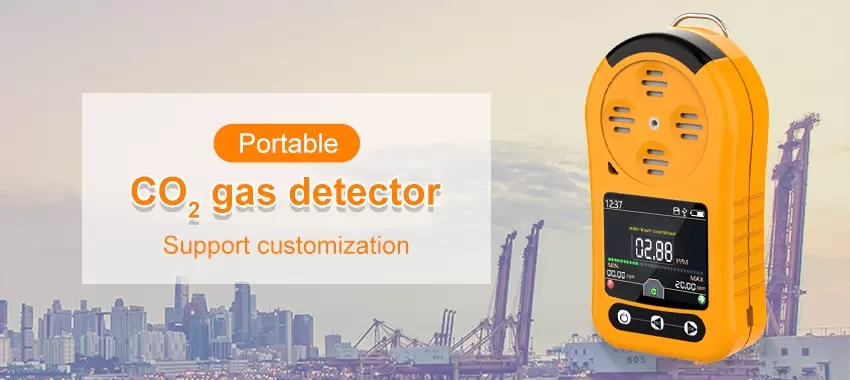Confined spaces pose a significant threat to workers in various industries, including oil and gas, manufacturing, and construction. These tight spaces may contain hazardous gases or chemicals, which make them deadly if not adequately monitored. Without proper safety measures in place, workers may be exposed to toxic fumes, which can lead to serious health risks and even death.
As advances in technology continu e to improve the industrial sector, gas detection for confined spaces is becoming ever more critical. The use of gas detection equipment is essential in identifying invisible and potentially harmful gases that could pose a risk during operations.
e to improve the industrial sector, gas detection for confined spaces is becoming ever more critical. The use of gas detection equipment is essential in identifying invisible and potentially harmful gases that could pose a risk during operations.
The objective of this article is to discuss confined space entry, types of gases to monitor, the importance of gas detectors, and best practices to ensure worker safety.
What are Confined Spaces?
A confined space is any area that is not designed for continuous human occupancy but requires people to enter occasionally for maintenance, inspection, or other necessary activities. Such spaces are usually limited in size, have restricted access, or may have an atmosphere that is dangerous to breathe.
Confined spaces can be found anywhere, from underground storage tanks to wastewater treatment plants, silos, manholes, and utility tunnels. Examples of such places include:
● Tanks and vessels
● Silos and hoppers
● Pipelines
● Basements
● Sewers and tunnels
● Ductwork
● Storage bins
● Boilers and furnaces
● Underground vaults
Types of Gases to Monitor in Confined Spaces
There are numerous potential hazards associated with confined spaces, but the most common is exposure to toxic or flammable atmospheric gases. It is crucial to identify the types of gases present within confined spaces before entry to prevent accidents and fatalities.
Some of the typical gases that are monitored include:
● Hydrogen Sulfide (H2S)
This gas is colorless, but also lethal at high concentrations. It is extremely toxic and has a "rotten egg" odor. H2S can be found in many oil and gas production processes, wastewater treatment, and sewage; exposure to this gas can cause nausea, difficulty breathing, headache, loss of consciousness, and even death.
● Carbon Monoxide (CO)
This gas is odorless, tasteless, and invisible, making it hard to detect without specialized equipment. CO is created when fuels such as propane and gasoline are burned; it can lead to headaches, dizziness, nausea, and vomiting, and even death. CO also reduces the amount of oxygen in the air.
● Methane
Methane occurs naturally in coal mines and other underground spaces. It is colorless, odorless, and highly flammable. Exposure to methane may cause dizziness, headaches, nausea, and in extreme cases, explosions.
● Oxygen
Low levels of oxygen concentration can be equally hazardous as increased levels of toxic gases. In confined spaces, where oxygen is displaced by other gases, workers can have difficulty breathing and may eventually pass out or even die. Workers must monitor the concentration of oxygen before entering any confined spaces.
Importance of Gas Detectors
Gas detectors play an essential role in preventing accidents and fatalities within confined spaces. They are specialized devices that measure the levels of different gases present in the atmosphere to ensure that workers are safe while working in these areas.
Gas detectors can identify toxic gases, combustible gases, and oxygen level changes within confined spaces accurately. These detectors alert workers when gas levels become unsafe and provide them with sufficient time to evacuate the area. This quick reaction to gas levels is vital as it helps minimize exposure, reducing the severity of any potential injury if workers do become exposed.
Best Practices to Ensure Worker Safety
Effective implementation of gas detection procedures in confined space entry requires more than having the relevant instruments available. Below are best practices that ensure worker safety within the confined spaces:
Perform a thorough risk assessment before entering a confined space and implement the necessary preventative measures to minimize hazards.
Train workers who will be working in or near confined spaces on the dangers associated with such environments as well as proper use of gas detectors.
Use a “buddy” system for checking gas detector readings before and during entry into confined spaces by two trained personnel.
Establish an initial baseline reading of atmospheric air in the confined space and monitor it continuously throughout any activities. The National Institute for Occupational Safety and Health (NIOSH) has set specific guidelines that need to be met when evaluating gas/dangerous atmosphere within enclosed spaces.
Always maintain continuous communication with those outside the confined space, including established protocols to follow during emergency situations.
Invest in quality gas detection equipment designed specifically for monitoring confined spac
 : +86 155 8830 2704
: +86 155 8830 2704 : jxdziot@gmail.com
: jxdziot@gmail.com
